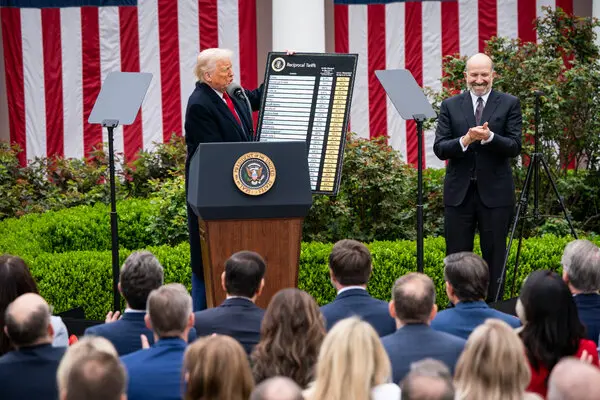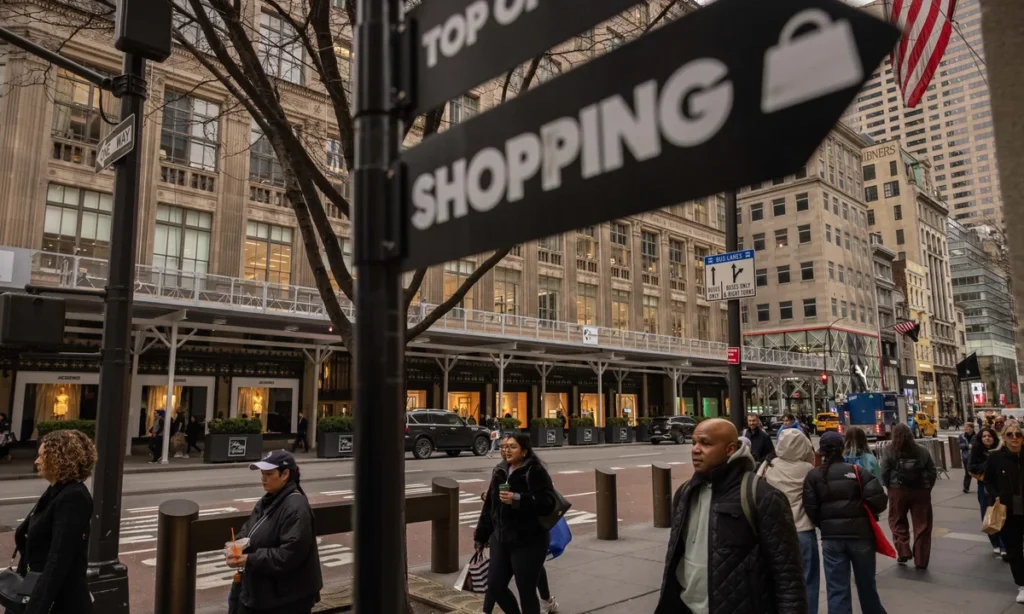The U.S. economy took a sharp and unexpected turn in early 2025. As reported by the Commerce Department, gross domestic product, adjusted for inflation, declined at a 0.3 percent annual rate in the first quarter. “A stunning reversal from the strong growth at the end of last year.”
The drop stemmed largely from the chaotic economic environment created in the opening months of President Trump’s second term. “Consumers and businesses scrambled to react to a constant stream of tariff announcements and policy shifts,” the article noted. The uncertainty and rapid changes were “enough to push economic growth into reverse.”
But economists warned not to read too much into the negative number. “More reliable data on consumer spending and business investment suggested that growth slowed in the first quarter but didn’t contract.”
Behind the Numbers: Pre-Tariff Panic Buying
The GDP dip, though misleading, still reflected the real impact of Trump’s trade war posture. “Consumers raced to buy cars and other goods before tariffs took effect. Businesses did the same with equipment, parts and raw materials.”
That panic buying inflated imports dramatically. The article explained: “The decline in G.D.P. in the first quarter was driven almost entirely by a huge increase in imports,” which “shaved nearly five percentage points off G.D.P. growth.”
And it’s all in how GDP is calculated. Imports don’t directly subtract from GDP, but “the government counts all the goods and services sold in the country, and then subtracts the ones that were made overseas.” This method can skew early readings, especially when inventory data is imprecise. Economists expect that “first-quarter inventory figures will be revised higher” or that “inventories will jump again next quarter, providing a temporary lift to G.D.P.”

Chaos Sets In Before April’s Major Tariff Announcements
The first-quarter numbers came “before Mr. Trump announced even more sweeping tariffs in early April.” What followed was “a full-blown trade war with China,” with financial markets reacting swiftly. “Stocks fell on Wednesday morning,” and “the S&P 500 fell about 2 percent in early trading.”
Mr. Trump took to social media to address the situation, asking supporters to “be patient” and blaming his predecessor for the economic instability. His trade adviser, Peter Navarro, even claimed the GDP numbers “really should be very positive news for America.”
“Few economists agree.”
Forecast: More Slowdowns Ahead
Kathy Bostjancic, chief economist for Nationwide, warned, “Once everything kicks in, we’ll have a slower economy, the labor market slowing. Hiring has already stalled, and we expect the unemployment rate to start to rise.”
Sarah House, economist at Wells Fargo, echoed the concern. “Businesses can absorb some of that cost and try to wait it out and shield their customers for a period,” she said. But if tariffs persist, “then at some point you have to think about your margins and your overall profitability.”
The inflation picture in March brought modest relief. “The Personal Consumption Expenditures price index… was up 2.3 percent from a year earlier,” slightly better than February’s 2.5 percent increase. “On a monthly basis, prices were flat.” But even that encouraging sign “was from before the bulk of Mr. Trump’s tariffs took effect.”
Confidence Drops but Spending Holds… for Now
“Americans have become increasingly worried about higher prices as a result of tariffs,” and this has caused “a sharp drop in consumer confidence.” Yet, “there is little sign so far that their dim outlook has translated into a pullback in actual spending.”
Consumer spending slowed to a 1.8 percent annual rate from 4 percent, partly blamed on “harsh winter storms that hit Southern states in January.” March spending rebounded, “led by a big increase in car purchases before tariffs took effect.”
Similarly, “business investment in equipment soared,” despite pessimism in corporate surveys. This shows the extent to which companies were stockpiling ahead of expected costs.
Uncertainty, Not Fundamentals, Is the Real Threat
“Consumers and businesses began changing their behavior in response to Mr. Trump’s policies even before the April 2 tariff announcement.” And while the full consequences are still developing, economists are warning that “the damage could be substantial, especially if Mr. Trump continues to change his approach on a nearly daily basis.”
Despite the turmoil, the article points out, “the U.S. economy has proved remarkably resilient in recent years.” Unemployment remains low, and incomes are rising. But if companies begin layoffs, “the economic situation could deteriorate in a hurry.”
The labor market is already showing signs of strain. “Companies have already pulled back on hiring,” and “forecasters expected growth to slow this year even before Mr. Trump took office.”
As Diane Swonk, chief economist at KPMG, summed it up: “We keep putting weight on the economy instead of lifting weight.”
Wall Street Ends Higher After Volatile Session Amid Tariff Talks, Mixed Data



